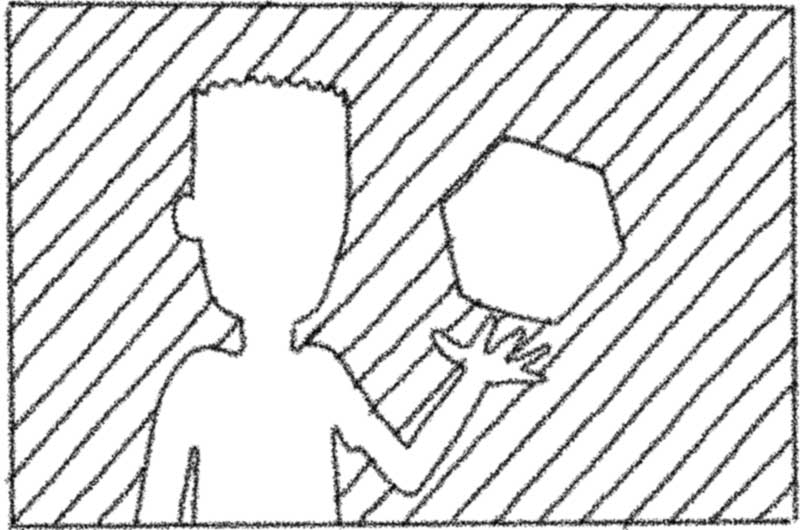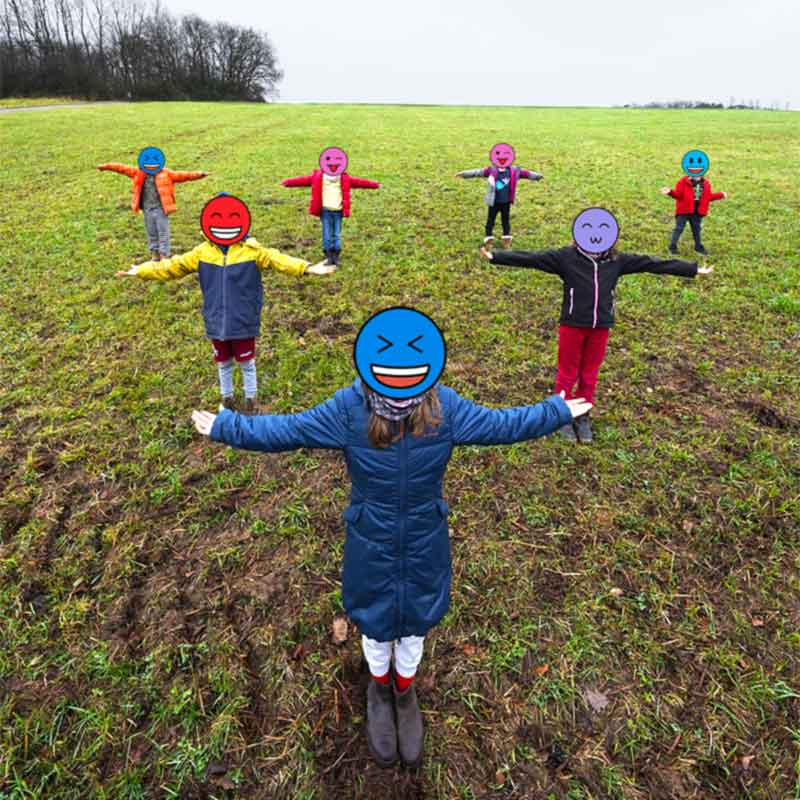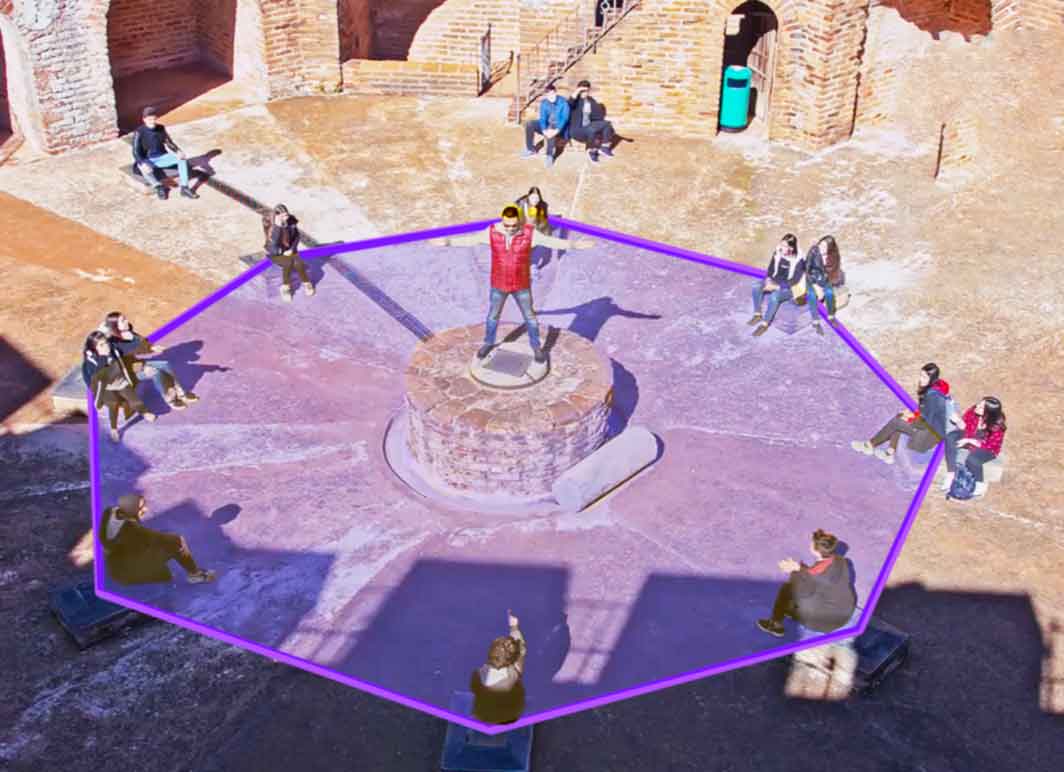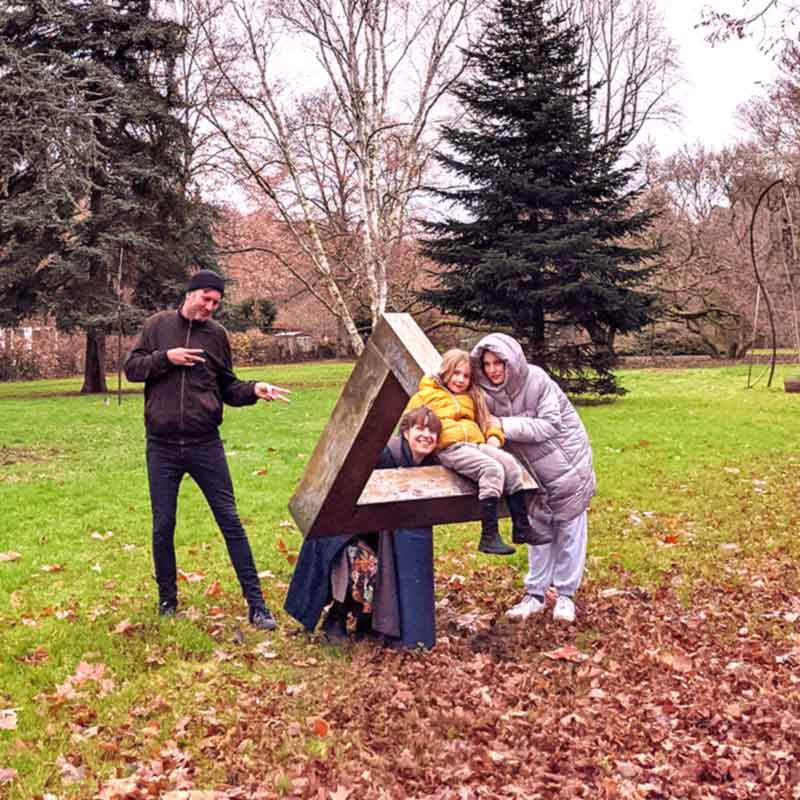Mathematics Unites
Photo Challenge
The theme for the 2022 International Day of Mathematics is Mathematics Unites. Let’s connect through this year's challenge: photos with mathematics!
Take a picture of yourself (you can team up with your class, friends, family, pets, neighbors) with a mathematical thing:
- A mathematical object you built,
- … or drew,
- … or formed using people’s bodies.
- Or maybe there’s a very mathematical building or bridge in your city,
- … or a statue of a famous mathematician.
- Mathematics is everywhere, but sometimes it’s hiding, so you can also reveal it in some way.
Remember that mathematics is much more than numbers!
- Geometrical shapes,
- patterns or sequences,
- formulas,
- tesselations,
- fractals,
- and many other things!
We’d also love to see where you live, so use the chance to show us your city, town, village, landscape, school, or workplace!
You can send us your photos until March 7, 2022. We'll share the best ones we receive in a gallery. Follow us on social media or subscribe to our newsletter for future announcements.
Everyone can participate. Share the challenge in your school or university. Team up!
Rules of the challenge
- The challenge is open until the end of March 7, 2022.
- Send a photo that includes:
- You, and maybe other people (friends, family, class, neighbors, etc.).
- A mathematical thing (see examples above)
- Your city, town, an interesting landmark, your school, university, or workplace.
- You can send more than one photo, but they should be independent.
- Be sure to ask for permission from anyone that appears in the photo. If minors appear in your picture, you should ask for their permission and their parents’.
- If you want to protect your identity or anyone else’s or would prefer not to show your face for any reason, feel free to wear a mask, use glasses and a wig, or cover it with an emoji (you can use our official IDM smiley faces).
Technical details
- Send your photos in JPEG format.
- Square photos (1:1) work best! But you can also send photos in vertical (portrait) or horizontal (landscape) orientation.
- Try to use a resolution of 1200x1200 pixels or larger, but preferably not bigger than 4800x4800 pixels.
Tips for a good photo

- Rule of thirds: If you divide the photograph area into thirds both vertically and horizontally, the key parts of the photo should be located at the intersection of the divisions.

- The space around the subject of a photo is called “negative space.” Make sure your image includes enough negative space to balance the area of the subject. Your composition will improve if you pay special attention to the negative space when framing your picture.
- Make sure the light source (the sun or lamp) is in front of the subject, so it lights them from the front.
- Make sure the camera doesn’t move to avoid blurry photos. Press your arms against your body, exhale and press the shutter lightly, use some object to support the camera, or use the timer function.
Techniques and ideas to inspire you
- Build a geodesic dome using plastic straws. (here’s another video)
- Build a giant mathematical puzzle using cardboard boxes.
- Use forced perspective (a technique often used in movies) to make small objects appear large and vice versa.
- Look up “light painting” and “double exposure” to learn some pro photographic techniques!
- Create amazing visual illusions on the sidewalk using chalk. (here’s a second example).
- Check out the art of Simon Beck, who creates fractals in the snow and sand by walking, and the surreal and impossible landscapes created by Erik Johansson.


